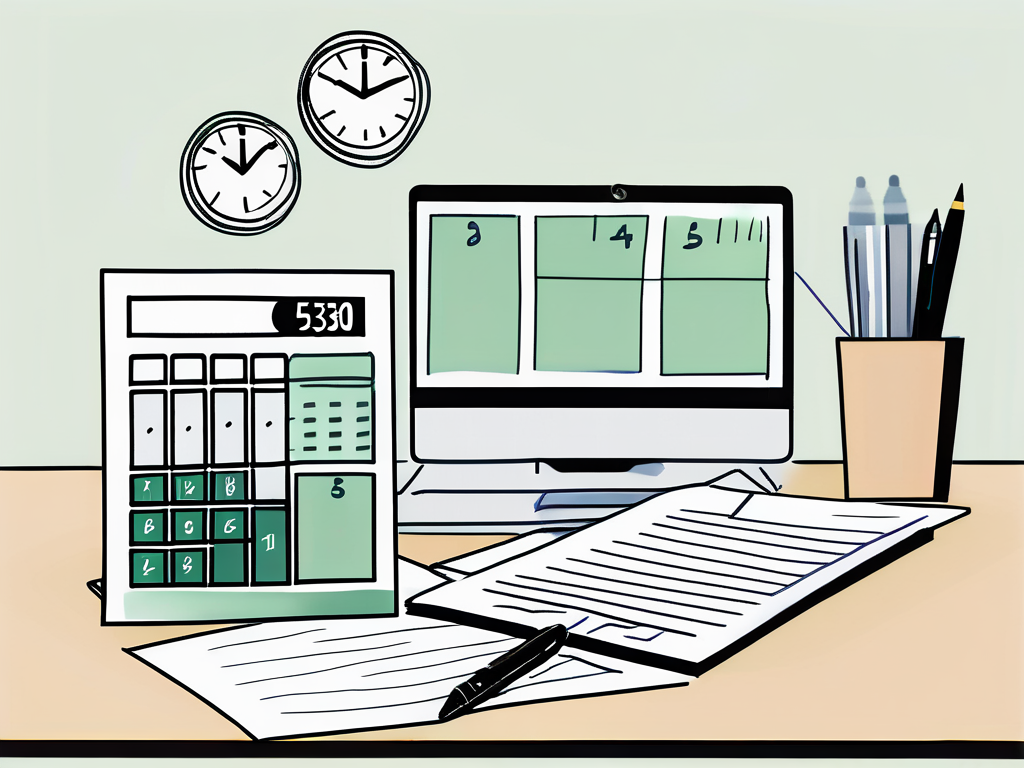Unlock the secrets of Form 5330 with our comprehensive guide.
rEAD MORE.png)

Navigating the intricacies of tax forms can be daunting, especially when it comes to something as specific as Form 5330. Designed for the Employee Retirement Income Security Act (ERISA), this form requires careful attention to detail. Whether you're a plan administrator or a participant in a retirement plan, understanding how to complete this form correctly is crucial to avoid penalties and ensure compliance. In this comprehensive guide, we will explore everything you need to know about Form 5330, from its purpose and structure to tips for successful filing.
Form 5330 serves as a crucial instrument in the realm of retirement plans, specifically to address excise taxes related to failures in compliance with certain provisions of the Internal Revenue Code. Understanding why this form exists can help demystify the filing process. The Internal Revenue Service (IRS) utilizes this form to ensure that retirement plans adhere to the established guidelines, thereby protecting both the plan participants and the integrity of the tax system.

Form 5330, also known as the "Return of Excise Taxes Related to Employee Benefit Plans," is used to report and pay the excise taxes imposed by the Internal Revenue Service (IRS) on specific violations. These violations primarily pertain to the operational aspects of pension and welfare benefit plans. By filing this form, organizations can rectify their compliance issues and mitigate the financial repercussions that may arise from non-compliance. This proactive approach not only aids in maintaining the plan's tax-qualified status but also fosters trust among employees regarding the management of their retirement benefits.
Typically, the need to file Form 5330 arises for plan administrators, sponsors, or other responsible individuals linked to retirement or health plans. If your organization has incurred excise taxes due to plan failures, such as excess contributions, missing disclosures, or improper handling of plan assets, this form must be filed. It is essential for those involved in the administration of these plans to stay informed about their responsibilities, as the implications of failing to file can extend beyond financial penalties, potentially affecting the overall reputation of the organization and its commitment to employee welfare.
The timing of your Form 5330 filing is critical to avoid penalties. Generally, this form should be filed within 15 days after the due date of the excise taxes. Moreover, knowing the deadlines tied to plan operations will help streamline your compliance strategy. Keeping a calendar of important dates related to your plan can significantly reduce the risk of oversight. Additionally, it is advisable to consult with tax professionals or legal advisors who specialize in employee benefits to ensure that all aspects of the filing are handled correctly and that any potential issues are addressed before they escalate into more serious compliance problems.
Once you've grasped the importance of Form 5330, breaking down its components can simplify the filing process. This form consists of several sections that require careful attention to detail. Understanding the nuances of each section not only aids in compliance but also helps in avoiding potential penalties associated with misfiling or incomplete submissions.

Form 5330 is divided into multiple sections which cover various aspects of excise taxes. These sections include identification information, details about the plan, and specific violations prompting the filing. Familiarizing yourself with the structure will enhance your ability to navigate the form effectively. For example, the identification section requires accurate information about the plan and its sponsor, which is crucial for the IRS to process the form correctly. Additionally, the section detailing the specific violations is vital, as it outlines the nature of the infractions and helps determine the applicable excise taxes.
Filing Form 5330 requires a solid understanding of several key terms. For instance:
Additionally, it is important to be aware of other related terms such as "qualified plan," which refers to retirement plans that meet the requirements set forth by the IRS and ERISA, allowing for tax benefits. Understanding these terms not only aids in the accurate completion of Form 5330 but also equips you with the knowledge to address any issues that may arise during the filing process. Furthermore, being well-versed in the implications of these terms can help in making informed decisions regarding plan management and compliance strategies.
As you prepare to fill out Form 5330, understanding each step will significantly facilitate your completion of the form. This section will serve as your roadmap through the filing process.
Preparation is key when tackling Form 5330. Begin by gathering all relevant data, including information about the retirement plan, specifics on the excise tax amount, and any necessary documentation that supports your filing. It is also advisable to review any previous filings or correspondence with the IRS regarding your retirement plan, as this can provide valuable insights into your current obligations and any potential discrepancies that may need addressing. Additionally, consider consulting with a tax professional or legal advisor who specializes in retirement plans to ensure that you fully understand the implications of the excise tax and any penalties that may be associated with late or incorrect filings.
Each section of Form 5330 has specific instructions that must be followed meticulously. Here is a breakdown:
In addition to these sections, it’s important to be aware of any additional schedules or attachments that may be required based on your specific circumstances. For example, if your retirement plan has undergone any changes or if you are reporting multiple incidents that trigger an excise tax, you may need to include supplementary documentation that provides context and justification for your calculations. Furthermore, keep in mind that the IRS may require supporting evidence, such as financial statements or plan amendments, to substantiate your claims. Therefore, maintaining a well-organized filing system can be invaluable in ensuring that you have everything readily available for both the completion of Form 5330 and any potential audits or inquiries that may arise in the future.
Even minor errors can result in significant consequences when filing Form 5330. Recognizing common pitfalls is essential for successful compliance.
One of the foremost mistakes made by filers is providing incorrect or incomplete information. Double-check all entries to ensure that names, numbers, and tax amounts align with your records. Utilizing cross-reference documents can be beneficial in this regard. Additionally, consider having a second set of eyes review your Form 5330 before submission. A colleague or a tax professional may catch errors that you might overlook, ensuring that all details are accurate and complete. This extra step can save you from costly mistakes and the stress of dealing with potential audits.
Deadlines are critical when filing Form 5330. Missing these dates can lead to severe penalties. Be proactive in marking deadlines on your calendar, and consider setting reminders as the due dates approach. Furthermore, familiarize yourself with the specific filing schedule for Form 5330, including any extensions that may be available. Understanding the timeline not only helps in avoiding penalties but also allows you to plan your financial strategies more effectively. If you find yourself struggling to meet a deadline, it may be worth consulting with a tax advisor who can provide guidance on the best course of action and help you navigate any potential repercussions.
Navigating Form 5330 successfully involves more than just filling out the required fields. Below are some tips that can assist you through the process.

The IRS provides an array of resources designed to help individuals understand the intricacies of Form 5330. Utilize these tools, including instructional guides and FAQs on the IRS website, to clarify any doubts you may have during the filing process. Additionally, consider attending IRS webinars or workshops that focus on retirement plan compliance. These sessions often feature experts who can answer specific questions and provide insights into common pitfalls to avoid, making the process smoother for you.
If you're feeling overwhelmed, don't hesitate to seek professional help. Tax advisors or professionals specializing in retirement plans can provide invaluable assistance, ensuring that your Form 5330 is completed accurately and filed on time. They can also help you understand the implications of any penalties for late or incorrect filings, which can be quite substantial. Furthermore, a knowledgeable professional can guide you through the nuances of your specific retirement plan, helping you identify any unique considerations that may affect your filing.
One of the most effective ways to ensure a smooth filing process is to familiarize yourself with common mistakes made on Form 5330. Many filers overlook critical details, such as the correct identification of the plan sponsor or miscalculating excise taxes owed. By reviewing examples of frequently encountered errors, you can take proactive steps to avoid them, ultimately saving yourself time and potential penalties. It may also be beneficial to create a checklist of all required information and documentation before you begin filling out the form, ensuring that you have everything at your fingertips.
Maintaining detailed records is crucial when dealing with Form 5330. Not only does this practice help in the accurate completion of the form, but it also provides a safety net in case of an audit. Keep copies of all correspondence related to your retirement plan, as well as any calculations or supporting documents that justify the figures reported on the form. This organized approach not only streamlines the filing process but also enhances your ability to respond to any inquiries from the IRS effectively.
To further aid you in navigating Form 5330, here are some frequently asked questions that may address any lingering queries.
Yes, if you discover an error after filing Form 5330, you can amend the form. It’s important to file the amended return as soon as possible to mitigate any penalties associated with the initial error. The amendment process involves submitting a new Form 5330, clearly marking it as an amended return, and providing a detailed explanation of the changes made. This not only helps in correcting the record but also demonstrates your commitment to compliance with IRS regulations.
Failure to file Form 5330 can result in substantial penalties, depending on the nature of the violations. Additionally, the IRS could take further action against the responsible individual or organization, showcasing the importance of timely and accurate filing. The penalties can include fines that accumulate over time, making it crucial to address any filing issues promptly. Moreover, non-compliance can lead to increased scrutiny from the IRS, affecting your organization's reputation and financial standing.
Understanding the implications of Form 5330 is essential for maintaining the integrity of your retirement plans. This form is not just a bureaucratic requirement; it serves as a safeguard for both plan participants and sponsors, ensuring that all transactions comply with the Employee Retirement Income Security Act (ERISA) regulations. By adhering to these guidelines, organizations can foster trust among employees and stakeholders, reinforcing the commitment to ethical management of retirement assets.
In addition to the financial penalties, neglecting to file Form 5330 can also result in the loss of tax benefits associated with your retirement plans. This could hinder your organization's ability to attract and retain talent, as employees often look for competitive retirement options as part of their overall compensation package. Therefore, taking the necessary steps to file Form 5330 accurately and on time is not only a legal obligation but also a strategic business decision that can enhance your organization's standing in the eyes of current and prospective employees.
Being audited is comparable to being struck by lightning. You don't want to practice pole vaulting in a thunderstorm just because it's unlikely. Making sure your books are accurate and your taxes are filed on time is one of the best ways to keep your head down during tax season. Check out Vincere's take on tax season!

This post is just for informational purposes and is not meant to be legal, business, or tax advice. Regarding the matters discussed in this post, each individual should consult his or her own attorney, business advisor, or tax advisor. Vincere accepts no responsibility for actions taken in reliance on the information contained in this document.
Copyright © 2025 Vincere Tax| All Rights Reserved
Privacy Policy